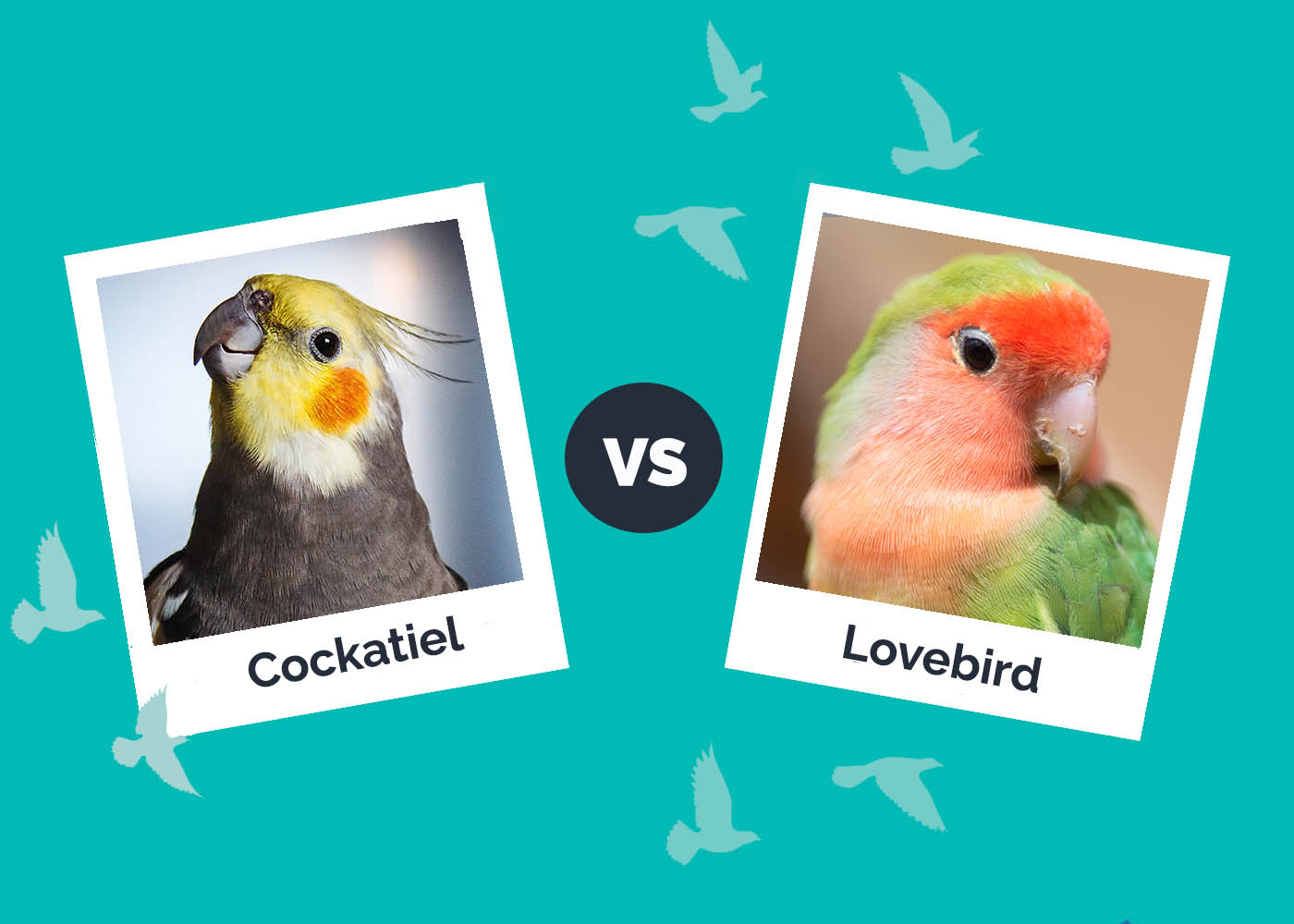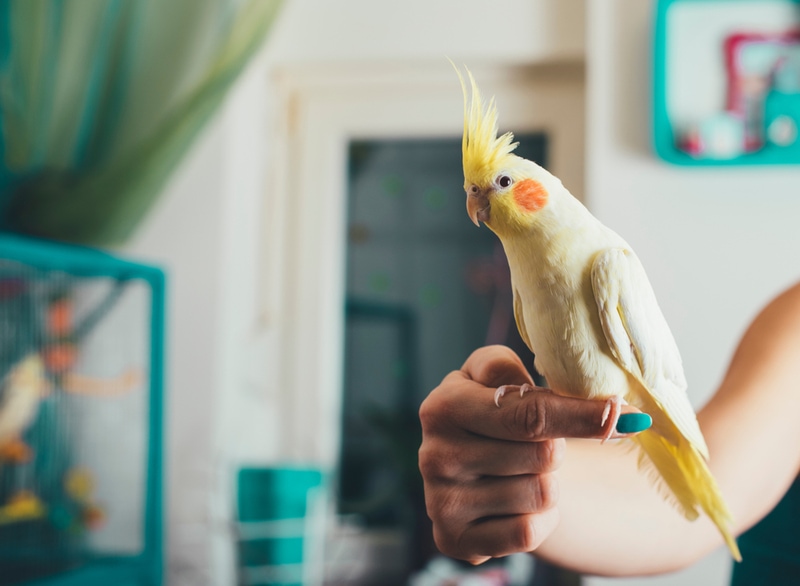Why Are My Parakeets Fighting? 10 Common Causes
Updated on
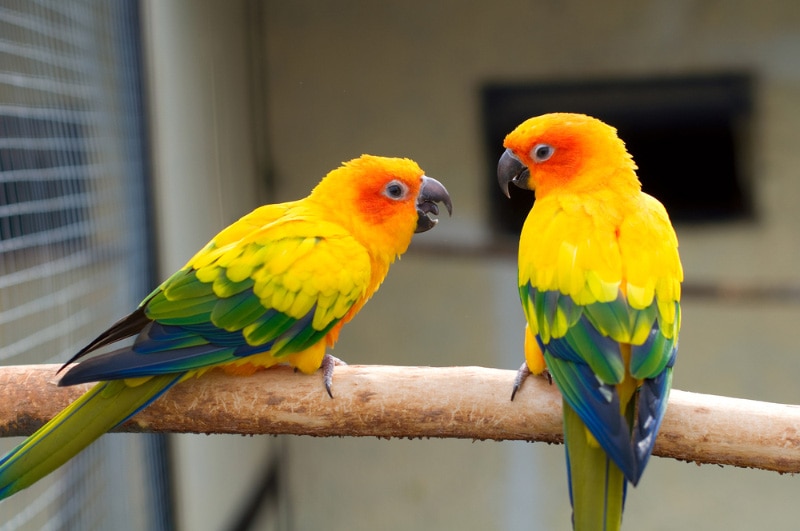
Click to Skip Ahead
Parakeets are regularly housed together—sometimes even in great big flocks. Often, this goes off without a hitch. Other times, though, it can lead to fighting. Sometimes, birds may seem to never get along with each other. Other times, they may seem to get along just fine, only to turn on each other years later.
There are many reasons why this may occur. For the most common reasons, keep reading.
Signs of Aggression in Parakeets
It’s important to realize when a parakeet is being aggressive, as opposed to trying to woo the other bird (which can be surprisingly hard to figure out). You don’t want to take your parakeets’ friendly behavior for aggression and make changes you don’t need to make.
- Biting: This behavior is the most obvious sign of aggression. If a parakeet bites another one, there is a very good chance they weren’t doing it in a friendly manner!
- Feather Fluffing: When a parakeet fluffs up its feathers, it may look small and adorable. However, this is commonly an attempt on the bird’s part to look bigger, which is usually a lead-up to aggression.
- Head Bobbing: Rapid head bobbing can sometimes be a sign of aggression, but this behavior can also have other meanings.
- Chasing: Usually, birds don’t chase each other around non-aggressively.
- Loud Vocalizations: Parakeets tend to be very vocal, so you shouldn’t use this as the only sign. However, they’re often particularly loud when being aggressive.
- Wing Flapping: Often, wing flapping occurs when a bird is being aggressive and trying to attract a mate. Therefore, this can’t be the only behavior you look at.
- Tail Fanning: Birds may fan their tails as a sign of irritation, which may lead to aggression.
- Blocking Access: Long territory disputes may lead to one bird blocking the other from accessing food, perches, or favorite toys. One bird may appear to be guarding the resource.
All of these behaviors point towards aggression, but a bird generally needs to show more than one for their behavior to be truly labeled “aggressive.”
Now, let’s look at the most common reasons why parakeets fight.
The 10 Common Causes Why Parakeets Fight
1. Territorial Disputes
Parakeets are naturally territorial. Therefore, one of the most common causes of fighting is one bird trying to establish dominance within the “territory” of the cage. Sometimes, individual parakeets may claim a perch or toy as their “territory” and prevent all other birds from using it. If another bird tries to use it, they may start fighting.
Often, these disputes settle on their own as birds give and take territory until everyone is satisfied.
However, some birds may be particularly stubborn, or there may not be enough territory for everyone. In this case, the fighting may continue indefinitely until one bird is seriously injured.
2. Resource Competition
Resource competition is similar to territory disputes. However, in this case, the birds are fighting over food, water, or another resource—not the bowl or the area around the resource. If you move the resource from one part of the cage to the other, the birds will continue fighting over it.
Often, this competition occurs when birds feel like there isn’t enough of something to go around. Therefore, they have to fight over the perceived scarcity. Even if you’d happily fill an empty food bowl back up, the birds don’t know this.
To solve this reason for fighting, you should add more of the resources the birds are fighting over. This may mean having two food bowls on different sides of the cage.
3. Gender Issues
If you house several males and females together, there may be increased fighting during the breeding season. Hormones and instincts push the males to fight over the females’ attention, which may lead to actual fighting.
You’d imagine that only the males would fight, but the increased tension can make females fight, too. Females may fight each other or even join in on fights between other males. The added hormones can throw the balance of the flock all out of whack.
Sadly, there isn’t much you can do besides separating the birds or waiting it out.
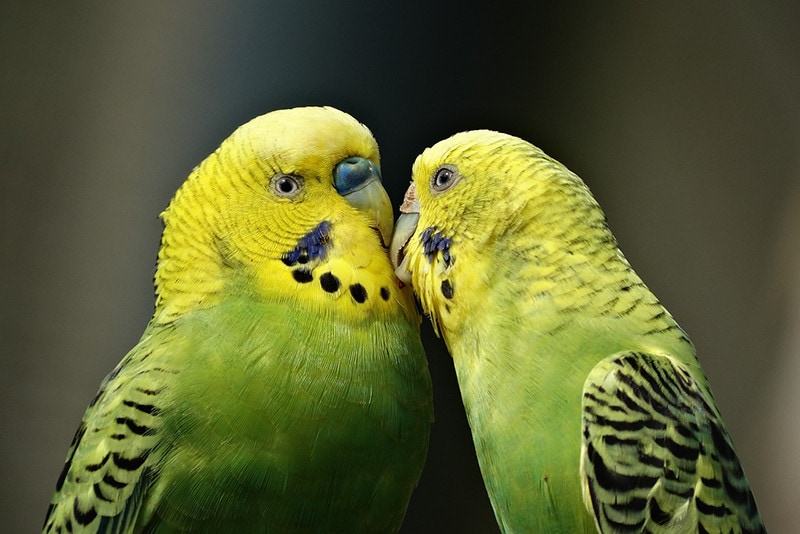
4. Temperament Differences
Sometimes, two birds just weren’t made to get along. You can do everything correctly, and two birds may still not get along. It isn’t always something you did or didn’t do.
Some birds are more dominant and stubborn. Others are more passive. When you have several passive birds or a dominant and passive bird together, things may turn out fine. However, pitting two stubborn birds together can be extremely challenging. Neither may back down, leading to continual fighting.
Some fights within the flock are bound to happen, but some birds are just more prone to fighting than others.
5. Not Enough Space
Parakeets don’t need tons of room like some other birds. However, they do require enough space to have their own little “territory” and access the resources they need without directly competing with other birds.
If you’re keeping your budgies in too small of a cage, fights are bound to happen more often. The birds will be unable to get away from each other when tensions rise. Typically, adding more room almost always lessens the number of fights, even if the birds are fighting for a different reason.
6. Changes in Environment
In many cases, birds may react negatively to any changes in the environment—even changes that are technically good for the bird. Change simply stresses these birds out! For this reason, if you make any of the changes suggested in the article, you may notice an increase in fighting for a few days. Once the newness of the change wears off, the fighting should dissipate.
As you might imagine, bigger changes lead to more fighting. Putting your birds in a whole new cage will likely result in fighting. However, simply adding another food bowl may not.
You should limit changes as much as possible to prevent aggression, but sometimes changes are unavoidable. In these cases, you just have to wait for your birds to adapt.

7. Illness or Pain
When sick or injured, birds tend to be more irritable and may feel a need to “act big” in an attempt to prevent attacks. Therefore, they may become more aggressive, though they may not actually fight more during this time. It may be more show than actual fighting.
If your birds are suddenly more aggressive or you notice other signs of distress, it may be a sign that you need to contact your vet.
8. Molting
When molting, budgies shed their old feathers and grow new ones. However, this process can be uncomfortable and may make them more irritable. Therefore, they may get into fights more often until they are done molting. Sadly, there isn’t anything you can do but wait out their molting period.
However, the fights caused by molting should only be minor. Birds may be a bit more uncomfortable, but this shouldn’t lead to serious fighting.
9. Inadequate Socialization
Birds are flock animals. However, that doesn’t mean that they will always get along with others. Birds raised on their own may not know how to act around other birds, causing all sorts of behavioral problems. Therefore, you should ensure that your bird is around others from a young age to prevent as many behavioral problems as possible.
It is possible to socialize a bird after it is grown. However, this is often more difficult. Usually, this process is very slow, so the bird will need to be removed from the others until it is properly socialized.
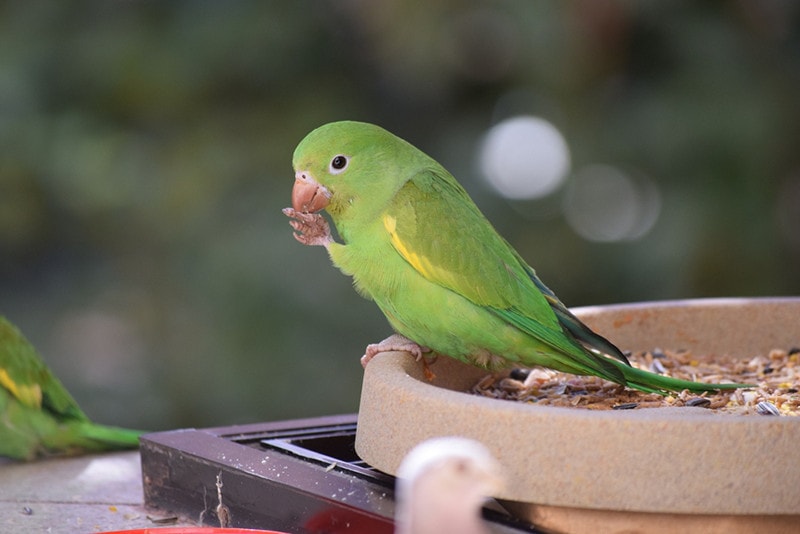
10. Stress
Any time a bird becomes stressed, there is a possibility that the bird will become more irritable and take it out on other birds. We’ve already covered several reasons a bird may be more stressed above, like illnesses and molting. However, there are lots of other reasons a parakeet may become stressed, as well. For instance, a bird may become momentarily stressed due to a loud noise, leading to more fights in the immediate future.
Most of the time, these reasons for stress are unavoidable, and you must simply wait them out. However, some sources can be adjusted by you. For instance, you may need to limit the amount of time your cat or dog spends around your bird’s cage if it leads to stress for your birds.
Conclusion
Parakeets may fight for a range of reasons. However, territorial disputes, resource competition, and injuries are likely the most common reasons. Introducing your birds together properly can go a long way to preventing fights. However, you may also need to make changes to their environment, such as getting a bigger cage or adding more food bowls.
Sadly, fights can’t always be prevented. Some amount of bickering is to be expected, but serious fights indicate a serious problem. Sometimes, two birds simply cannot get along and must be separated.
If two parakeets are injuring each other, it’s time to separate them. Sometimes, you may be able to re-introduce the birds after making some changes to their environment. Other times, you may have to house them separately permanently.
See Also:
Featured Image Credit: svand, Shutterstock


